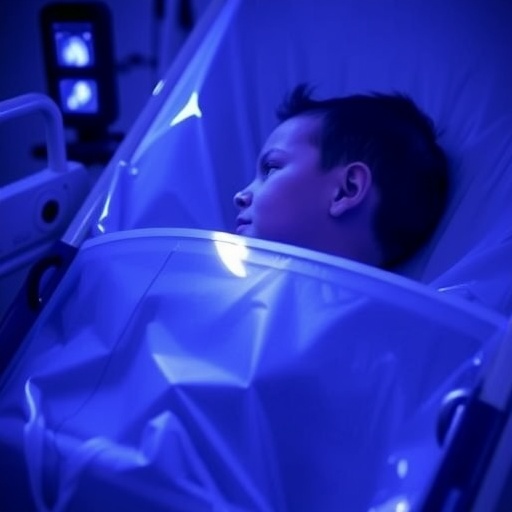
The Lingering Health Crisis Triggered by Wildfires: Insights from Los Angeles County and Maui
The catastrophic wildfires that recently swept through Los Angeles County in January 2025 and Maui in August 2023 have wrought a profound impact that transcends immediate destruction. Beyond the charred landscapes and sheer loss of property, new research emerging from prominent medical journals delineates an alarming spectrum of health consequences, revealing that the toll of wildfires is far more insidious and far-reaching than previously understood. These comprehensive studies, published in JAMA and JAMA Network Open, illuminate a sobering public health crisis shaped by complex interactions of environmental, physiological, and psychological factors instigated by wildfire exposure.
A key finding from the JAMA publication quantifies the excess mortality attributed to the Los Angeles wildfires. While initial reports documented approximately 30 direct deaths—those immediately resulting from fire-related trauma—the study’s analysis highlights a staggering estimate of 440 deaths occurring between January 5 and February 1, 2025, that are statistically linked to the fires. This discrepancy underscores that wildfire-related fatalities are not confined to direct trauma but extend to secondary effects tied to deteriorating air quality and disruptions in medical care. The study implicates wildfire smoke—which contains hazardous particulate matter and noxious gases—as a prime driver of cardiovascular and respiratory exacerbations, likely underpinning the elevated death rates.
.adsslot_X4IeVw80fO{width:728px !important;height:90px !important;}
@media(max-width:1199px){ .adsslot_X4IeVw80fO{width:468px !important;height:60px !important;}
}
@media(max-width:767px){ .adsslot_X4IeVw80fO{width:320px !important;height:50px !important;}
}
ADVERTISEMENT
This nuanced mortality portrait posits that wildfire smoke triggers an array of pathophysiological stressors. Fine particulate matter (PM2.5) infiltrates deep lung tissues, inducing inflammation and oxidative stress that compromise pulmonary function. Cardiopulmonary stress often manifests in heightened incidences of heart attacks, strokes, and chronic obstructive pulmonary disease exacerbations. These conditions, compounded by the disaster-driven strain on healthcare infrastructure—delays in emergency access, service interruptions, and overwhelmed medical facilities—potentiate an increase in indirect fatalities. The fusion of toxic exposure and inadequate care forms a lethal synergy, emphasizing the urgent need for resilient healthcare systems during environmental catastrophes.
Meanwhile, the psychosocial reverberations of wildfire disasters are brought to light in another JAMA study focusing on the 2023 Maui wildfires. The researchers identify a distressing surge in suicide and overdose deaths not only on Maui but also across the broader Hawaiian archipelago. This geographical diffusion of elevated mortality implies that mental health destabilization transcends the immediate disaster zone, affecting displaced populations who relocate to neighboring islands during or after the crisis. The findings suggest that traumatic wildfire exposure intensifies psychological distress and substance use vulnerabilities among survivors, with ramifications echoing well beyond the original wildfire footprint.
The interplay between forced migration and mental health challenges features prominently in this research. Displacement often entails social dislocation, loss of community, economic hardship, and diminished access to mental health resources—factors that collectively heighten risk for suicidal behaviors and drug overdoses. These outcomes highlight the critical necessity of incorporating behavioral health support and substance use prevention into disaster response frameworks. Addressing such needs preemptively could mitigate the delayed secondary health crises observed among wildfire-affected populations.
Complementing these epidemiological insights, a cohort study published in JAMA Network Open hones in on the midterm cardiopulmonary and psychological health burdens among adults affected by the Maui fires. This research reveals persistent declines in lung function and elevated cardiovascular strain months following wildfire exposure, underscoring that health sequelae endure well beyond the immediate aftermath. Notably, the study identifies social support as a distinct modifier of mental health trajectories, correlating higher levels of interpersonal connectivity with improved psychological outcomes. However, this protective buffer does not extend to physiological impairments such as reduced pulmonary capacity, which remain unmitigated by social factors.
These findings illuminate the multifaceted nature of wildfire health impacts, differentiating between mental and physiological dimensions. While community ties and culturally anchored social networks can foster resilience against psychological distress, they do not appear to reverse or halt the toxic damage inflicted on the cardiorespiratory system. This delineation accentuates the inadequacy of purely psychosocial interventions in addressing the full spectrum of wildfire-induced health damage, advocating for integrative approaches that encompass both clinical surveillance and targeted medical therapies.
Furthermore, the research points toward the necessity of culturally sensitive disaster response models that harmonize medical care with community-based support. Especially in contexts like Hawaii, where indigenous populations possess unique sociocultural frameworks, successful interventions must respect and incorporate traditional practices and local knowledge. Embedding clinical initiatives within these frameworks can strengthen trust, enhance engagement, and improve overall health outcomes during wildfire recovery.
The cumulative evidence from these studies serves as a stark forecasting tool in the context of an escalating climate crisis. As climate change intensifies wildfire frequency, scale, and duration, populations worldwide may face a mounting burden of both immediate and protracted health challenges. The complex synergy of environmental toxicants, healthcare system vulnerability, psychosocial trauma, and social determinants of health converges to create a cascading crisis that demands innovative and comprehensive public health strategies.
Technologically, advancing real-time air quality monitoring, coupled with predictive modeling of wildfire smoke dispersion, will be essential to preemptively alert vulnerable groups and healthcare providers. Deployment of mobile health units and telemedicine could circumvent infrastructural disruptions, ensuring continuity of care amid disasters. Moreover, mental health services must be seamlessly integrated into emergency response, with particular emphasis on reaching displaced persons who may be geographically and socially isolated.
From a research perspective, these investigations highlight critical gaps—especially the need for longitudinal biomarker studies to delineate chronic physiological sequelae and mechanistic pathways through which air pollutants exacerbate cardiopulmonary conditions. This deeper understanding could inform pharmacologic and environmental interventions to mitigate damage. Interdisciplinary collaboration incorporating environmental science, clinical medicine, psychology, and social sciences will be vital to holistically address the layered impacts of wildfires.
In sum, the three studies collectively reveal that the public health footprint of wildfires extends far beyond the singed landscapes and immediate casualties captured in traditional disaster narratives. The indirect mortality, chronic physiological impairments, and profound psychosocial toll lay bare the urgency of integrating environmental health, emergency care resilience, and mental health infrastructures to confront a wildfire future shaped by climate change. These insights serve as an urgent call to action for policymakers, healthcare systems, and at-risk communities to develop adaptive, culturally attuned, and anticipatory strategies that can safeguard health in an increasingly fiery world.
Subject of Research: Health impacts of wildfires on mortality, mental health, and cardiopulmonary outcomes in Los Angeles County and Maui.
Article Title: The Health Impact of Wildfires in Los Angeles County and Maui
News Publication Date: August 6, 2025
Web References: Embargoed studies to be available on JAMA For The Media website at embargo time.
References: Provided within the respective studies published in JAMA and JAMA Network Open.
Keywords: Wildfires, Human health, Air quality, Mortality rates, Suicide, Overdose, Cardiopulmonary health, Psychological health, Social support, Disaster response, Climate change, Healthcare delivery
Tags: air quality and health effectsenvironmental health crisisexcess mortality from wildfiresLos Angeles County wildfiresMaui wildfire consequencesmedical research on wildfirespsychological effects of wildfirespublic health implications of wildfiressecondary health effects of fireswildfire health impactswildfire smoke exposurewildfire-related fatalities





